Best Portable Launch Monitors 2025
The best portable launch monitors allow you to monitor your distances and swing with ease and perhaps cost less than you might think
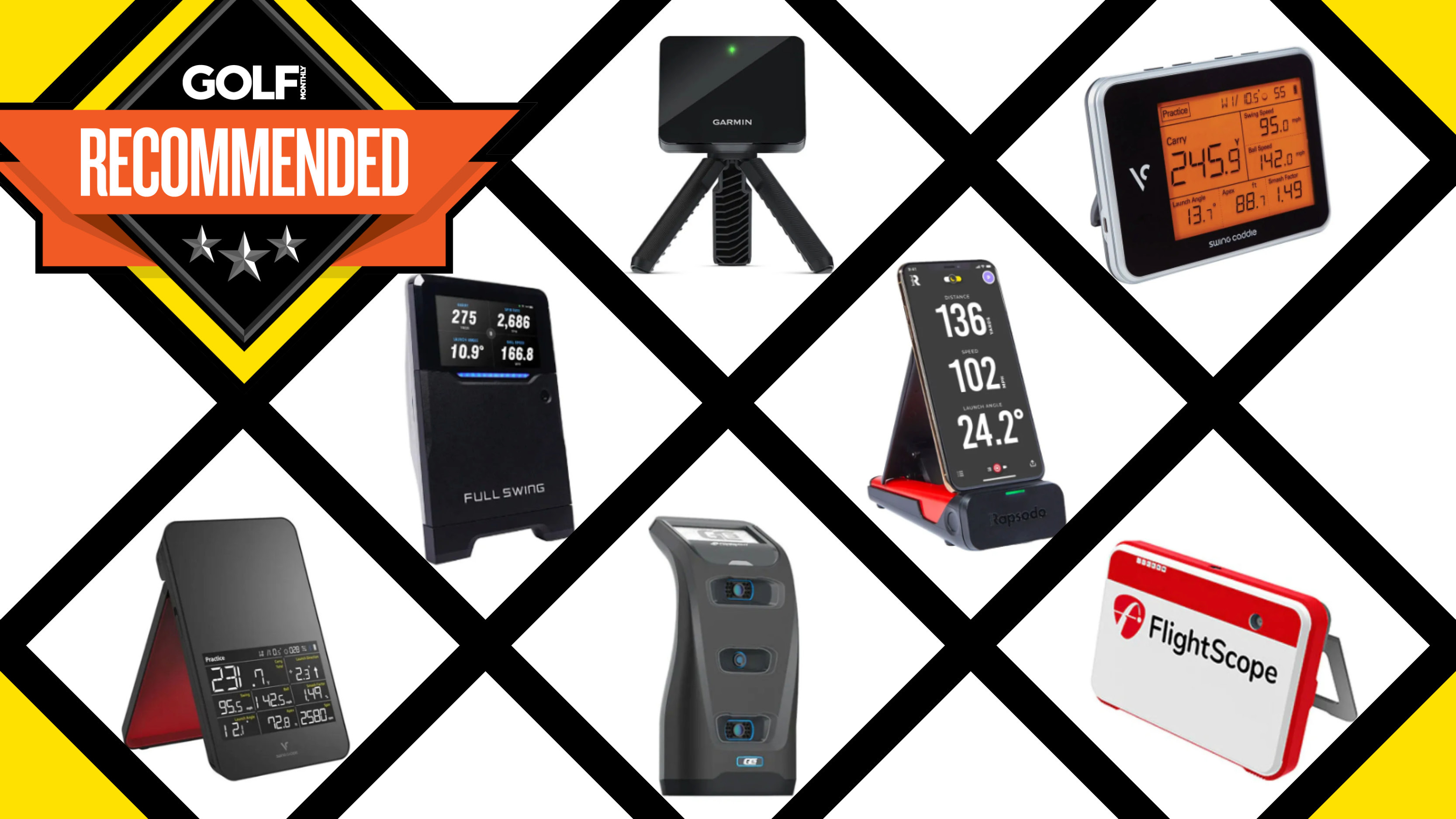

Not too long ago, the best golf launch monitors were pieces of golf tech reserved for the professionals of the game, almost solely found on PGA Tour driving ranges or Professional teaching facilities. However, in one of the fastest growing markets in golf equipment launch monitors have become affordable for almost all players of the game. Gone are the chunky pieces of kit that have to be connected to a screen and a high-tech computers. Now, with some devices all you need is a smartphone!
Launch monitors have become smaller and more affordable which makes them more useful as well. We no longer rely on the $10,000 Trackman device at our local teaching facility and can instead invest in a launch monitor that is so small it can easily be carried in our golf bags from round to round. The best portable launch monitors, such as our top pick, the Full Swing Kit Launch Monitor below, are easy to both setup and use, often connecting directly to our smartphones for simple visual and data feedback. This means less time faffing with setup and more time working on your game.
Given how much cheaper these devices have become it is understandable some players would question the accuracy of the cheaper portable rangefinders. Of course, a more expensive option is likely to be more accurate but we've found the floor on the cheaper side of the price spectrum to be pleasantly high. Below, we've chosen our favorites across a range of price points, varying from apps on your phone to specific devices to help fine tune your game.
VIDEO: Joel Tadman tests and compares five of the best portable launch monitors under $600
The Quick List
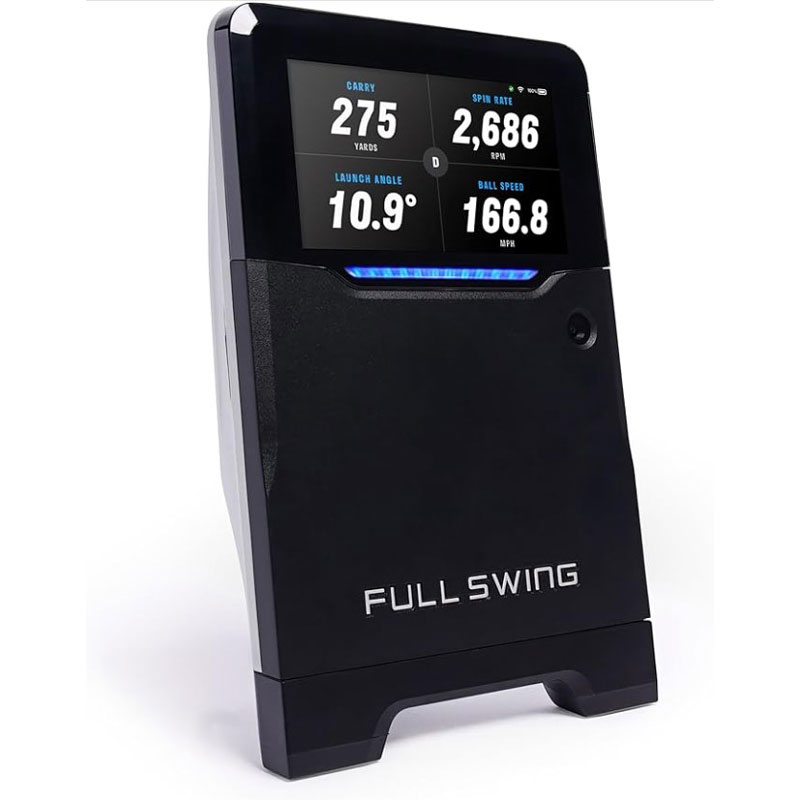
For those who enjoy practising, playing and competing, this is a launch monitor well worth considering, with this model used by Tiger Woods and Jon Rahm.
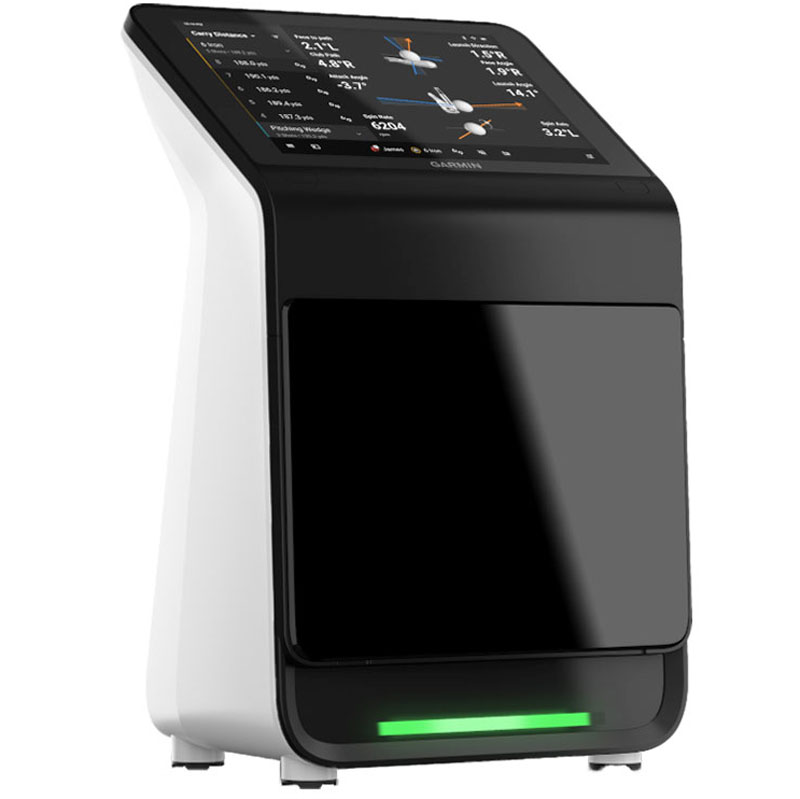
The experience with the R50 lived up to all expectations. It is simple to set up and use, the display is detailed and clear, the data accurate and simulator experience near faultless.
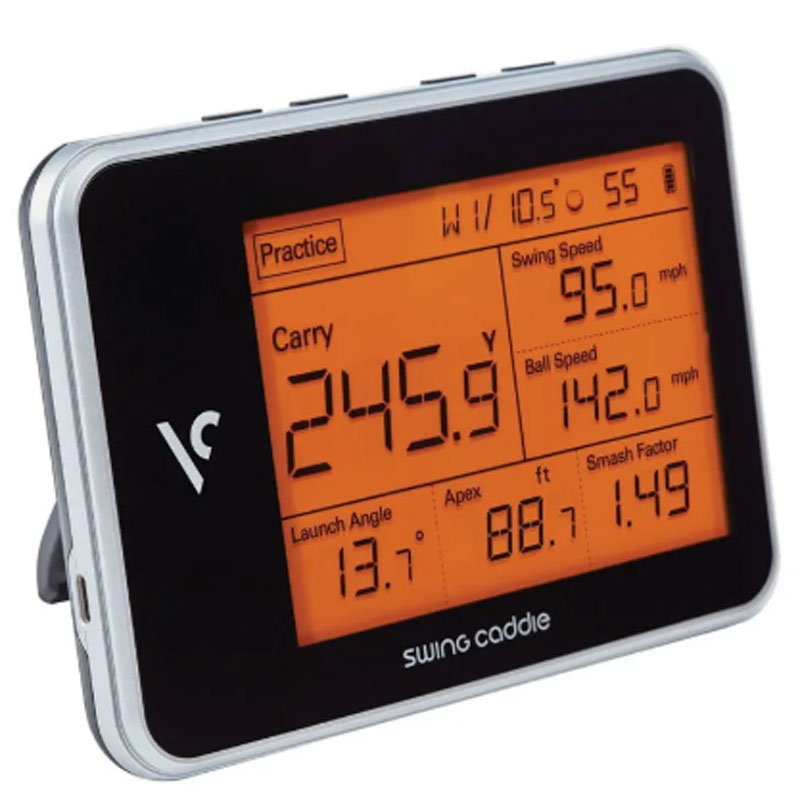
This model is one of the best value launch monitors on the market, with its impressive accuracy, ease of use and host of useful features making it an excellent option.
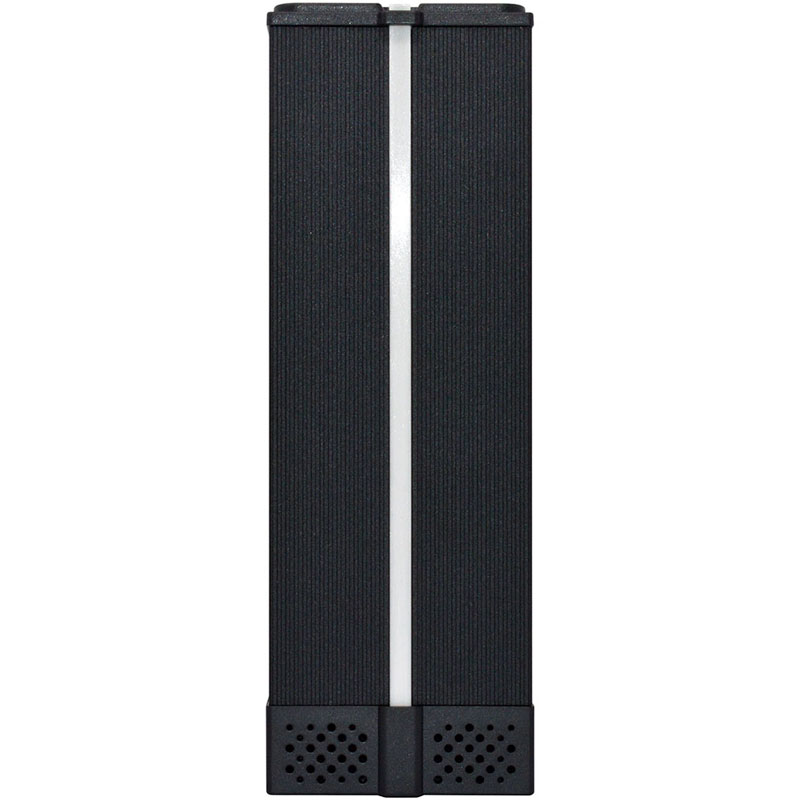
This is a totally immersive simulator experience and the accuracy of data is very impressive. Shot response time is excellent and the course offerings are well executed and challenging.

A good value and easy to use option, the Rapsodo MLM2 Pro is a great practice tool that provides accurate data and can double as a decent golf simulator.
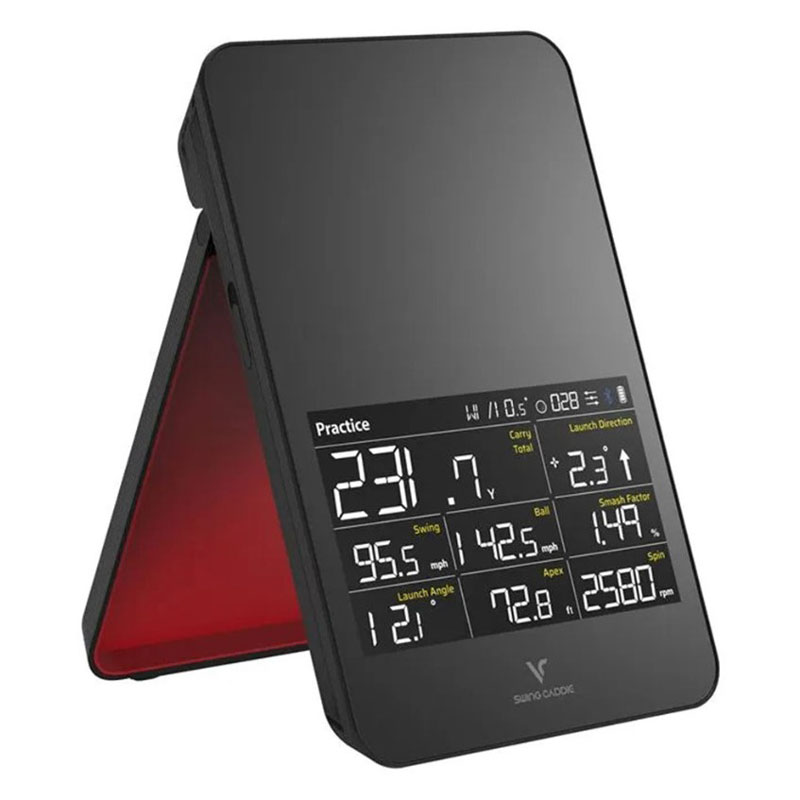
A lot of portable launch monitor for the money, the Voice Caddie SC4 works well as a stand-alone unit, but opens up even more features when paired with the MySwingCaddie app.
Load the next 4 models
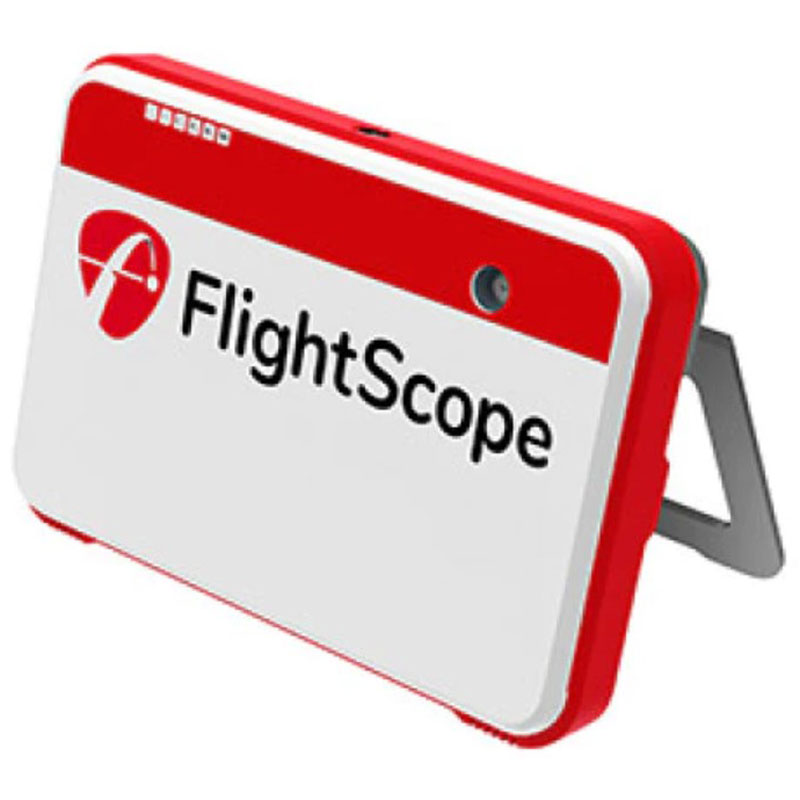
Designed for the serious golfer looking to improve through feedback on performance but also benefit from playing and practicing indoors as well as outside.
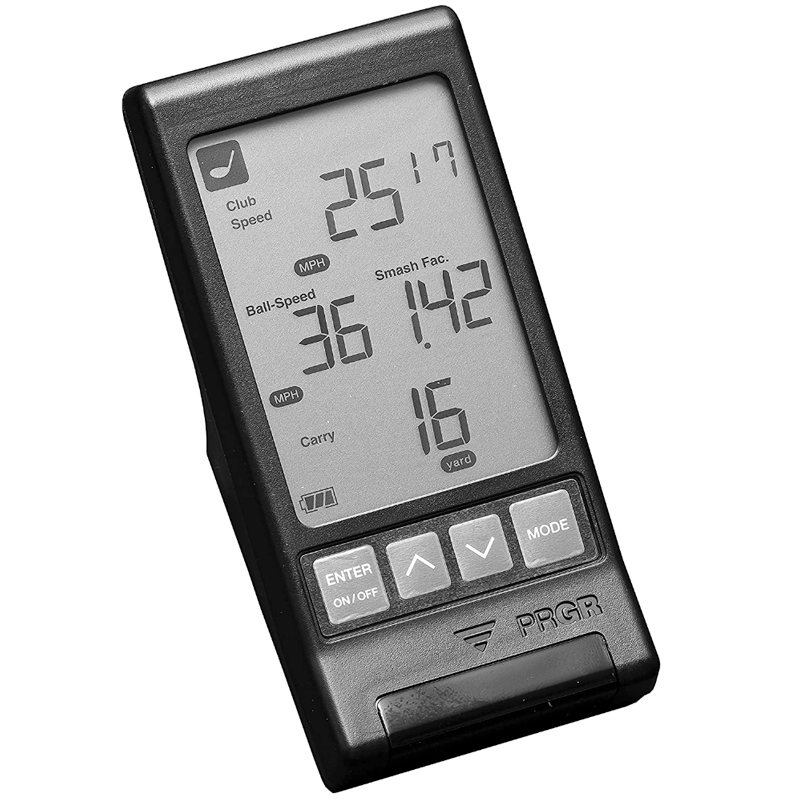
A seriously impressive device that makes owning a launch monitor much more accessible for many golfers. Good value for money, it is also accurate and consistent.
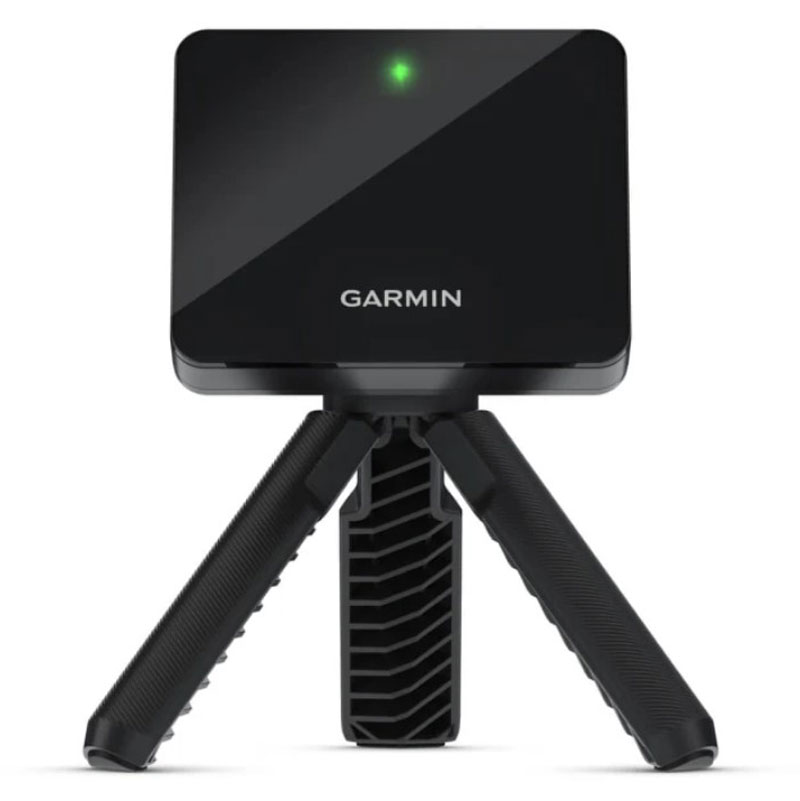
An enjoyable and highly accurate launch monitor that gives you vast amounts of data at your fingertips, the Approach R10 is extremely portable and easy to use.

The GC3 is a comprehensive and versatile launch monitor that looks to offer decent value for money given all the features on offer.
Best Portable Launch Monitors
Top pick
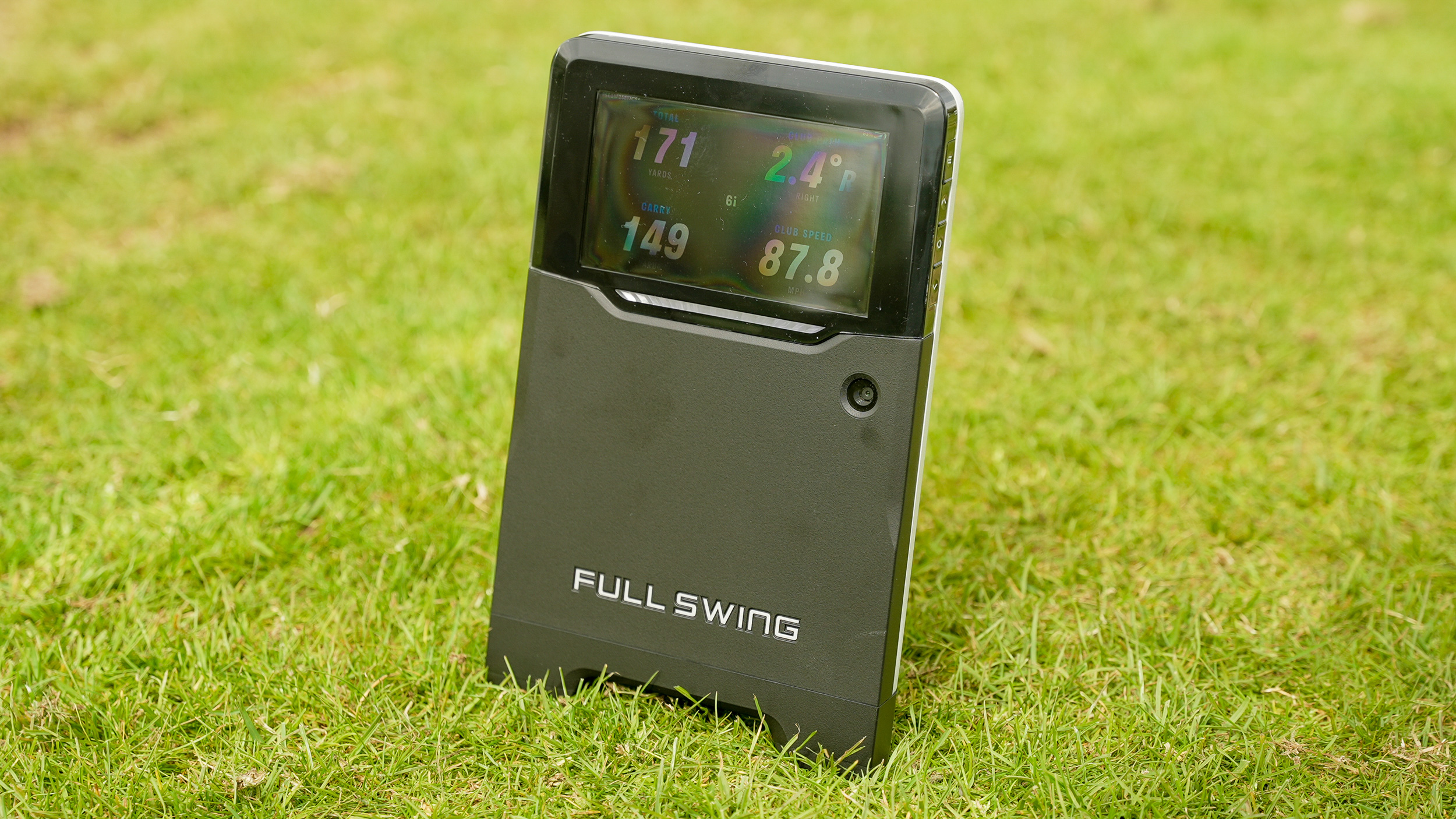
Specifications
Reasons to buy
Reasons to avoid
The most ringing endorsement any golf product can have is that it is used by Tiger Woods. If the GOAT is using it then it must be good, because Tiger is the ultimate golf nerd and few people on the planet are more knowledgeable about the game than him.
The Full Swing Kit Launch Monitor uses a Doppler radar to analyze your shots and provide subsequent data - which is good enough for Tiger (meaning it's good enough for you, too).
The Full Swing Kit is extremely straightforward to use. You start by downloading the free Full Swing app to your phone or tablet and pair it to the launch monitor. Then you place it on the ground 10 feet behind the ball and that's it. You're good to go!
When we tested this monitor we found the data to be accurate and reliable, with the quality of the app enhancing our practice experience. The monitor is easy and fun to use, meaning you'll enjoy your practice sessions while using it. It's simplicity may be it's best feature, with data feedback coming swiftly and effectively after your shots. A carry case in included which makes it easy to transport around and you can even connect your bluetooth earphones or headphones for audio feedback.
- Read our full Full Swing Kit Launch Monitor Review
Best features
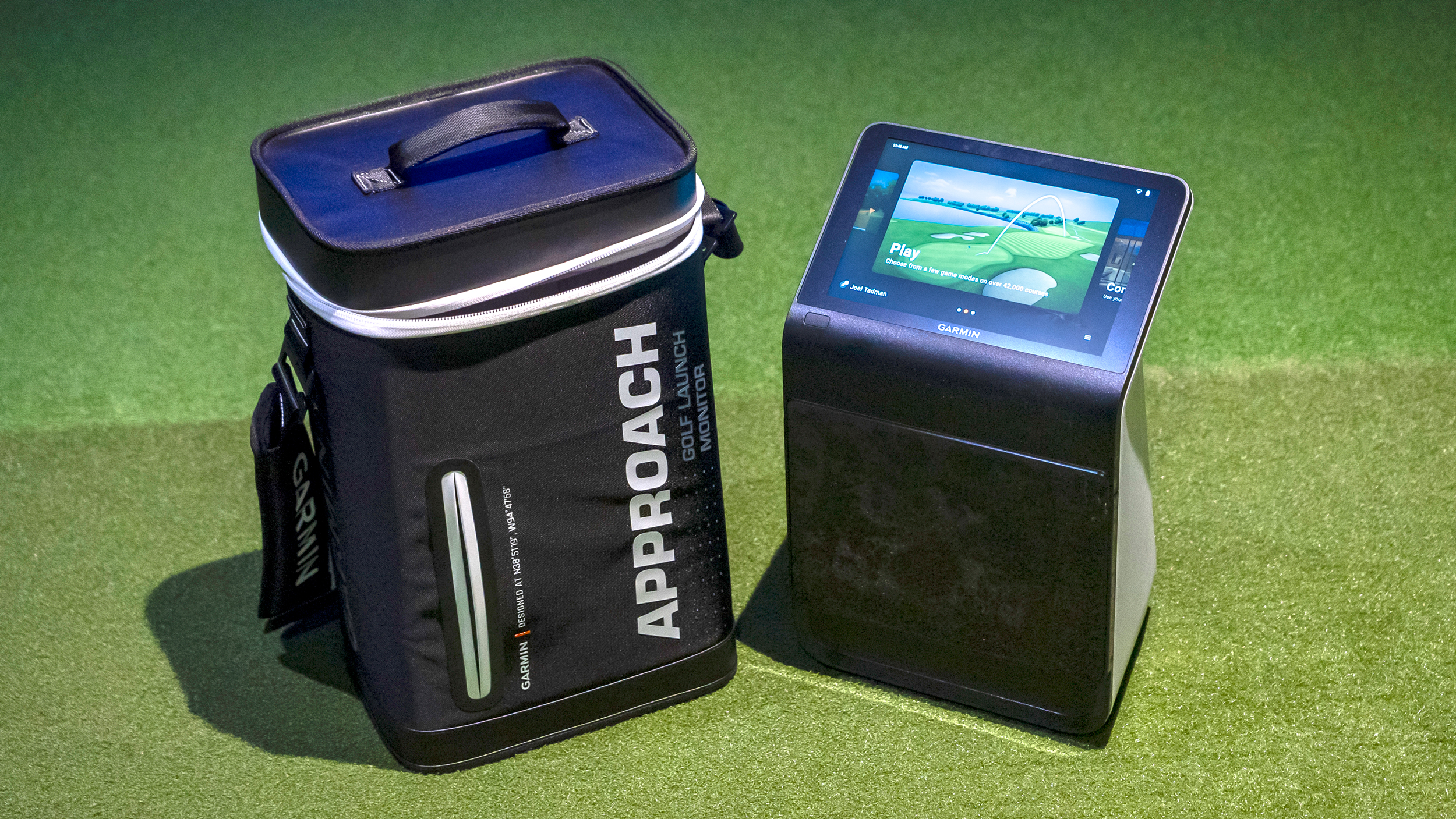
Specifications
Reasons to buy
Reasons to avoid
There was a lot of buzz around the R50 Launch Monitor from Garmin given it was the first (pretty much) launch monitor to also include built-in golf simulator capabilities. But how did it perform? Well firstly it is a pretty sizeable unit, and yet it isn't overly heavy at just above 4kg. It is easily portable too thanks to the ergonomic design.
It features a 10-inch full color touchscreen which I thought was bright, crystal clear and responsive. There are three high speed cameras which track 15 club and data points, and these numbers did stack up against the Foresight Sports GCQuad and GC3 models. I didn't see any real delay in getting the data although to get club data it was a little annoying having to apply a sticker to the top of each clubface. The customizable view of the data was a big plus point for me as well, as it allowed me to see metrics I was most interested in easily.
I really enjoyed the Play feature too. The graphics are outstanding and there are 43,000 courses to choose from, whilst there are cool hole flyovers to enjoy as well. I found the courses to be realistic enough - it makes power deductions for lies in the rough and bunker and it shows you the breaks on the greens.
All in all, my experience with the Approach R50 was an extremely positive one and it absolutely lived up to all the hype. It is not totally perfect, I wasn't a fan of having to bend or kneel down all the time to change the settings, nor the look of the data on the Garmin app, but these are minor points. I really do think the R50 has moved the needle in the golf simulator space, as well as on the monitor market.
- Read our full Garmin Approach R50 review
Best battery life

Specifications
Reasons to buy
Reasons to avoid
Voice Caddie are a company best known for producing personal GPS devices for figuring out distances to different points on the golf course, but they are also serious players in the launch monitor market and the Swing Caddie 300i is a great example of an affordable launch monitor with a lot of features.
Like the Full Swing Kit Launch Monitor, the Swing Caddie 300i is easily portable and uses doppler radar technology which measures atmospheric pressure through specialized sensors to provide more accurate data. It easily connects to the MySwingCaddies V2 app on your smartphone via bluetooth for players to track their numbers.
User convenience is enhanced through the voice output, and the video playback analysis feature adds another layer of detail to your practice sessions.
In testing we found that the SC300i was deadly accurate, especially outdoors, in terms of distance, swing speed and clubhead speed. It even compared very well with monitors that cost thousands of dollars. Indoors, the data was pretty close to a much more expensive simulator we used in conjunction with it. It is certainly among the most accurate among all the portable launch monitors under $600 and has a 20+ hour battery life to go with it.
- Read our full Swing Caddie SC300i Launch Monitor Review
Best value
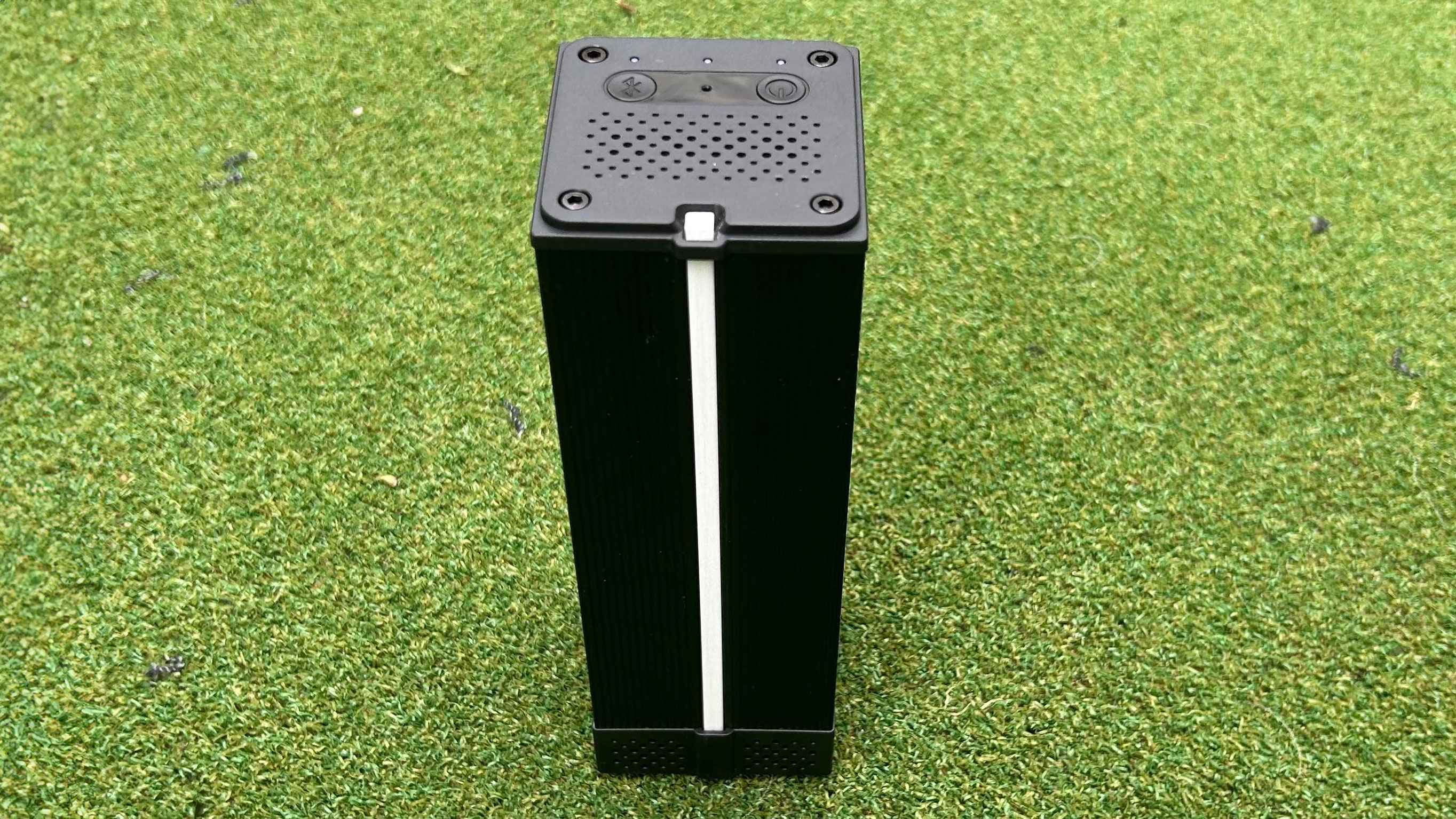
Specifications
Next up we have the Square Golf Launch Monitor which comes in at the value end of the price spectrum, and I was pleasantly surprised with the performance in testing. It is very lightweight and portable, coming in at only 470 grams with the battery.
I started on the range as I wanted to get a feel for how responsive and accurate the unit was and I have to say I was very impressed on both counts. Some launch monitors have a somewhat annoying time delay from the time the ball impacts the screen to how quickly the software projects a ball flight, but with Square Golf this is almost instantaneous
Additionally the gameplay on the courses was realistic, the overall speed of the monitor was excellent and the data is accurate enough to satisfy the majority of golfers. If you have the space for a home indoor setup, you will get a lot of fun and value for money from a Square Golf launch monitor. For the price, there's excellent value for money on offer here compared to many of the best budget launch monitors.
- Read our full Square Golf Launch Monitor Review
Best set up process

Specifications
Reasons to buy
Reasons to avoid
The Rapsodo MLM2PRO is easy to set up and use, measures most everything you need, shows both 3-D and 2-D views, and comes in at just $699 retail.
It comes with a protective case that fits nicely and easily into your golf bag which includes a tripod, user manual and a sleeve of specially-marked Callaway RPT Chrome X golf balls - a trusted brand who make some of the best golf balls on the market. The balls measure. spin metric and should realistically be used when inside or hitting into a net, but there is a setting on the device for range balls and premium balls which can be used when on the range.
The MLM2PRO comes with Impact Vision, a useful took for the player seeking to analyze their ball striking and make adjustments. This is one of the two cameras in this launch monitor which is incredibly easy to use with the unique three-legged tripod. The other camera, branded the Shot Vision camera, videos your swing and shows the track of your shot - not dissimilar to the pro tracer we see while watching professional golf on TV. You can add a third camera with through your phone or tablet for extra analysis, too.
In testing, we found that it doesn't track the ball all the way to the end but, with a combination of Doppler Radar and the cameras, it does track it for a large portion of its ball flight to come up with the curvature and height of the shot. In the data, you will find carry distance, clubhead speed, ball speed, and launch angle, from which it extrapolates total distance.
Purchase of the MLMPRO includes a year of premium membership which includes 30,000 simulator courses, a "Vritual Driving Range" and the aforementioned Impact Vision camera which provides a major upgrade over the original Rapsodo Mobile launch monitor. This launch monitor works with Android devices too, unlike the mobile launch monitor, but your membership will cost $199 annually after your first year expires.
- Read our full Rapsodo MLM2PRO Launch Monitor Review
Best display
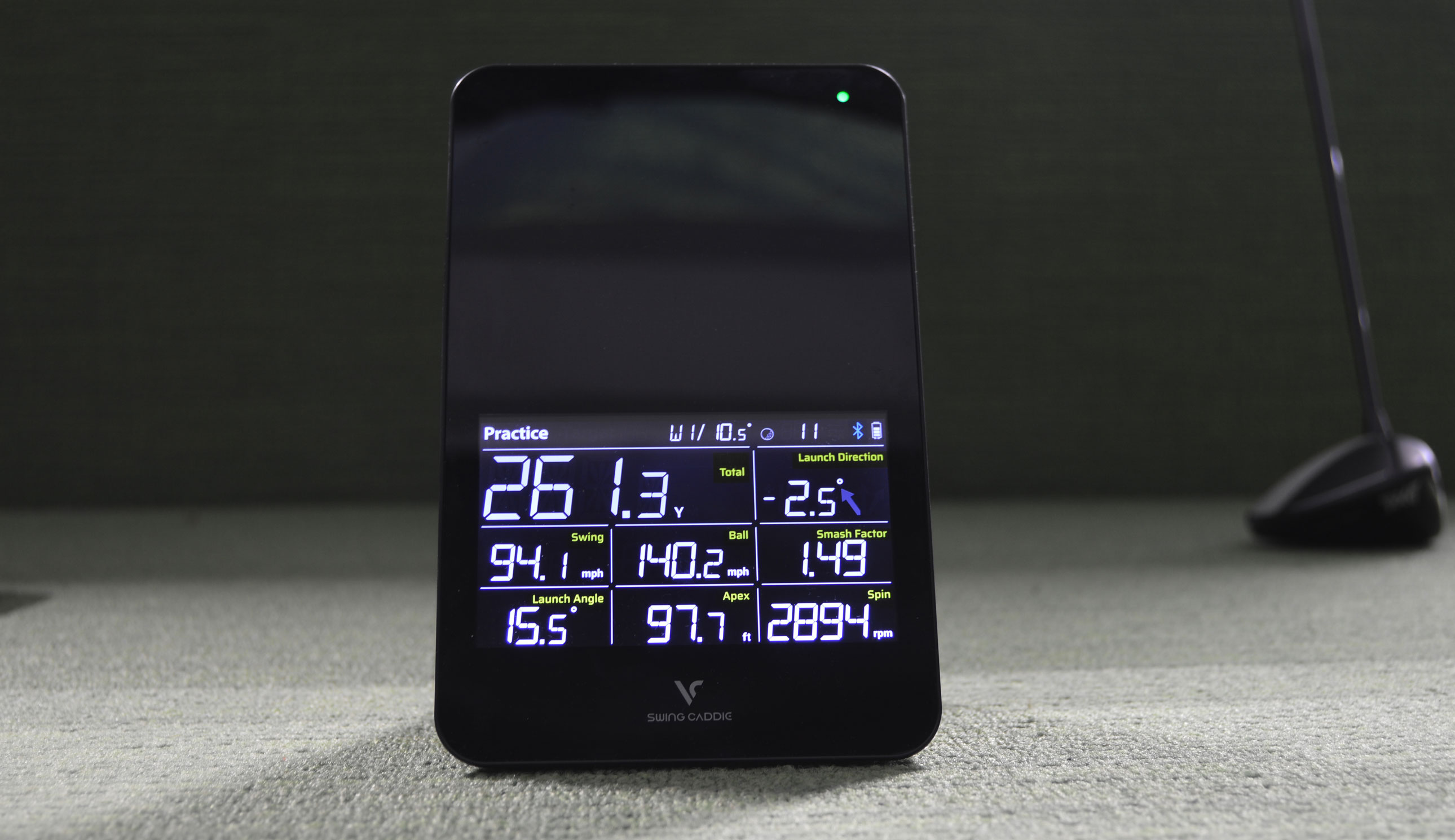
Specifications
Reasons to buy
Reasons to avoid
At $550 retail, the SC4 is certainly one of the value options amongst the best portable launch monitors on the market and, out of the box, it might be the easiest to use. You just simply charge it, turn it on (each full charge gives you 10-plus hours), place it five feet behind the ball, line up with your target line and away you go.
The SC4 has its own display, meaning you don't have to connect it with a smartphone or tablet like other launch monitors. You simply swing, listen and look. There's a remote control that magnetically attaches itself to the unit which is simple to use and makes it easy to change modes, clubs, and adjust other settings while you’re hitting balls.
This monitor comes with a carry case and charging cable, and while this piece of kit is a little bulkier and heavier than other models we tested, it still fits easily into the golf bag. This allows you to use it on the range before heading out for your Sunday competition round without having to run back to the clubhouse and throw it into your car or locker.
As for what it measures, the SC4 pretty much has all the necessary metrics. It starts out with distance, which can be toggled between carry and total distance. It provides launch direction, as well as swing speed, ball speed, launch angle, apex, smash factor and spin. However, we did notice that spin rates felt a little higher than expected during testing.
- Read our full Voice Caddie SC4 Launch Monitor Review
Best ease of use
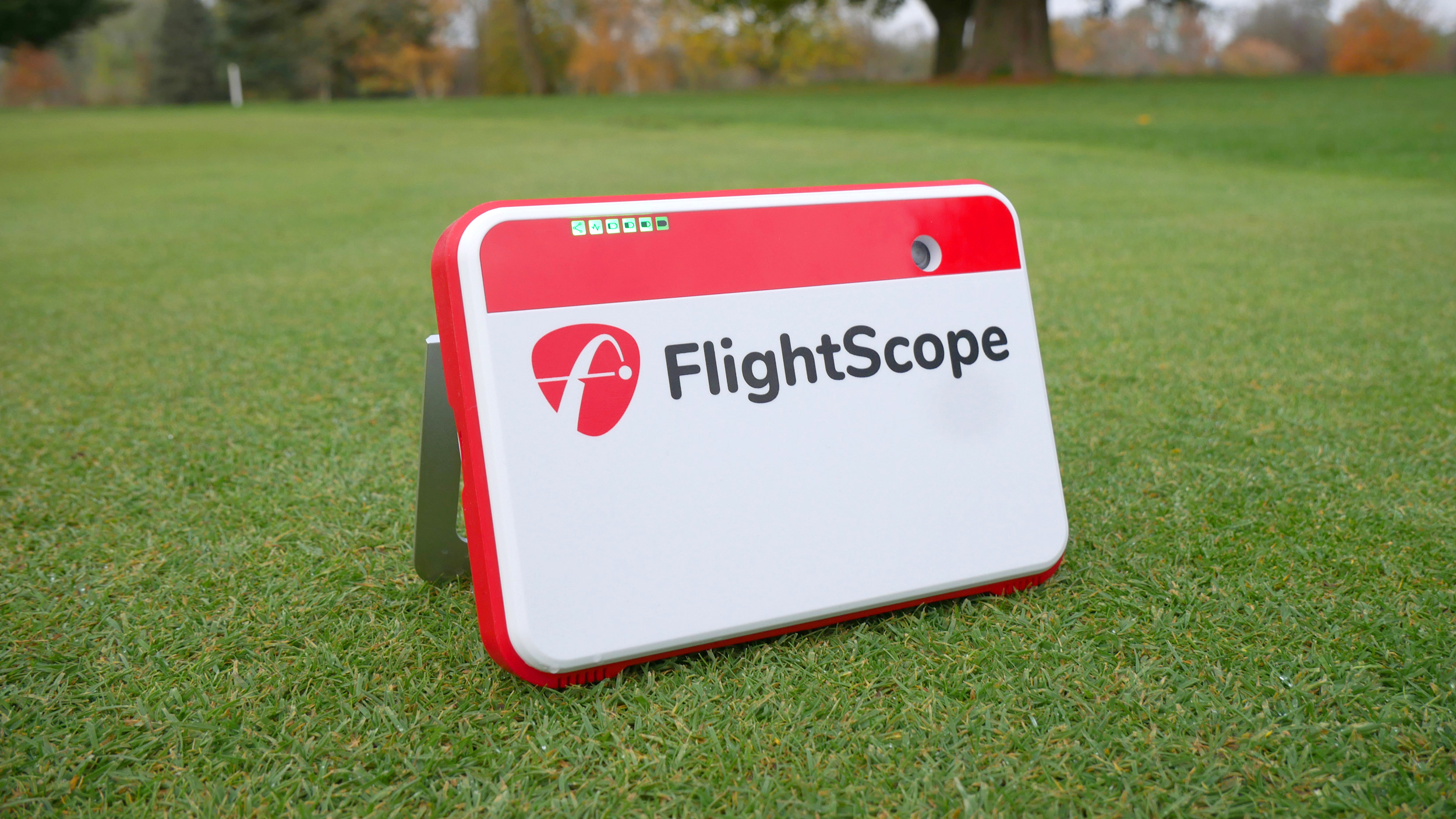
Specifications
Reasons to buy
Reasons to avoid
This mid-range offering from Flightscope provides golfers with all the data they would ever need (and then some) via a device that is very easy to set up and an app interface that even the least tech-savvy golfer out there should be able to grasp. It isn't the smallest device on this list but it is portable thanks to the included carry case that clips on to your bag and the fact it is very lightweight.
The Flightscope Mevo+ comes in the mid-range of the monitors we tested in terms of price but still provides players all the data they would need from a launch monitor. Set up is simple and the app interface is even easier to navigate. It's a bit bulky in comparison to some of its comeptitors, but can clip onto your golf bag and weighs next to nothing.
Althought the Mevo+ can work outdoors, it performs best indoors on the likes of a simulator or driving net where it can double up as an impressive simulator in which you can virtually play some of the most famous golf courses from around the world.
We also liked how it works with the FS Skills app, which provides a multitude of skills challenges to test different areas of the game and provide points based on your performance for you to then try and beat next time. You can even create your own challenges and see how you compare to a PGA Tour player.
- Read our full Flightscope Mevo+ Launch Monitor Review
Best handheld
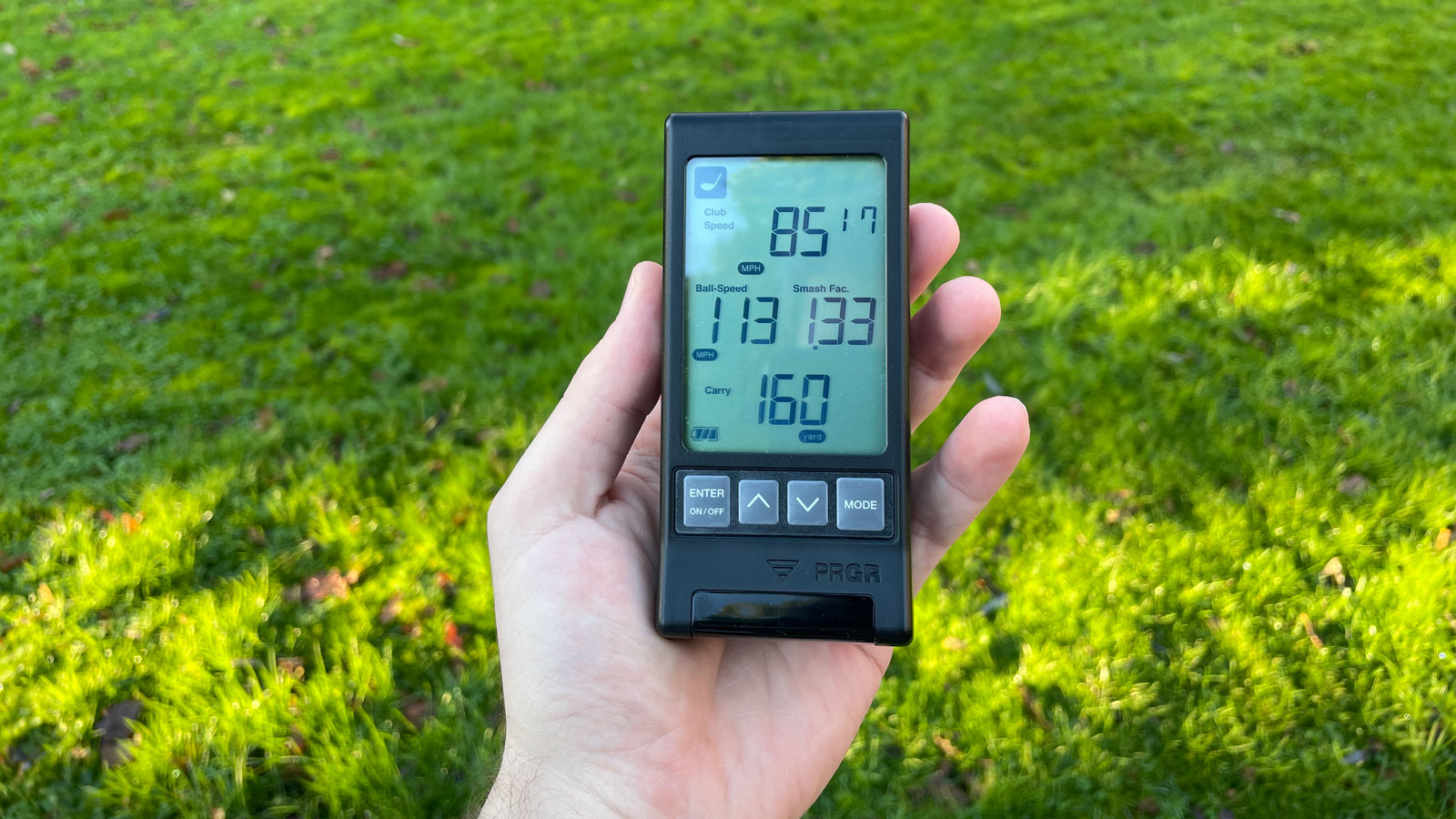
Specifications
Reasons to buy
Reasons to avoid
This doppler radar option is so handy that it will fit neatly in your pocket, providing you with the ultimate in portability as well as all the data metrics needed to help you understand your game, such as speed, distance and smash factor. The graphics and buttons are fairly basic but you get all the information you need on a screen that is easy to read.
Another launch monitor using the technology of the doppler radar, the PRGR Portable Launch Monitor is so small it can fit in your pocket. It's ultra-portable as a result while giving you all the data sets you need to work on and understand your game - speed, distance and smash factor. The graphics and buttons are relatively basic in comparison to competing monitors, but all your information is there on the screen and is easily digestible.
The latest version has a higher-quality dual radar sensor, an improved processor and algorithm to increase accuracy, a larger, high-resolution display and improved wedge measurement (especially on higher-lofted shots) to capture more shots, as well as the ability to switch between yards and meters. You can also use it with any SuperSpeed swing training clubs to see if your exercises are increasing the amount of speed you can generate.
Although there is no app to connect with this monitor to record your data, the device will log your last 500 shots which allows players to go back and analyze your shot data manually if you want to note it down with the old fashioned pen and paper. This is ideal starting place for the golfer purchasing their first launch monitor or who have never properly recorded their yardages.
- Read our full PRGR Portable Launch Monitor Review
Most compact
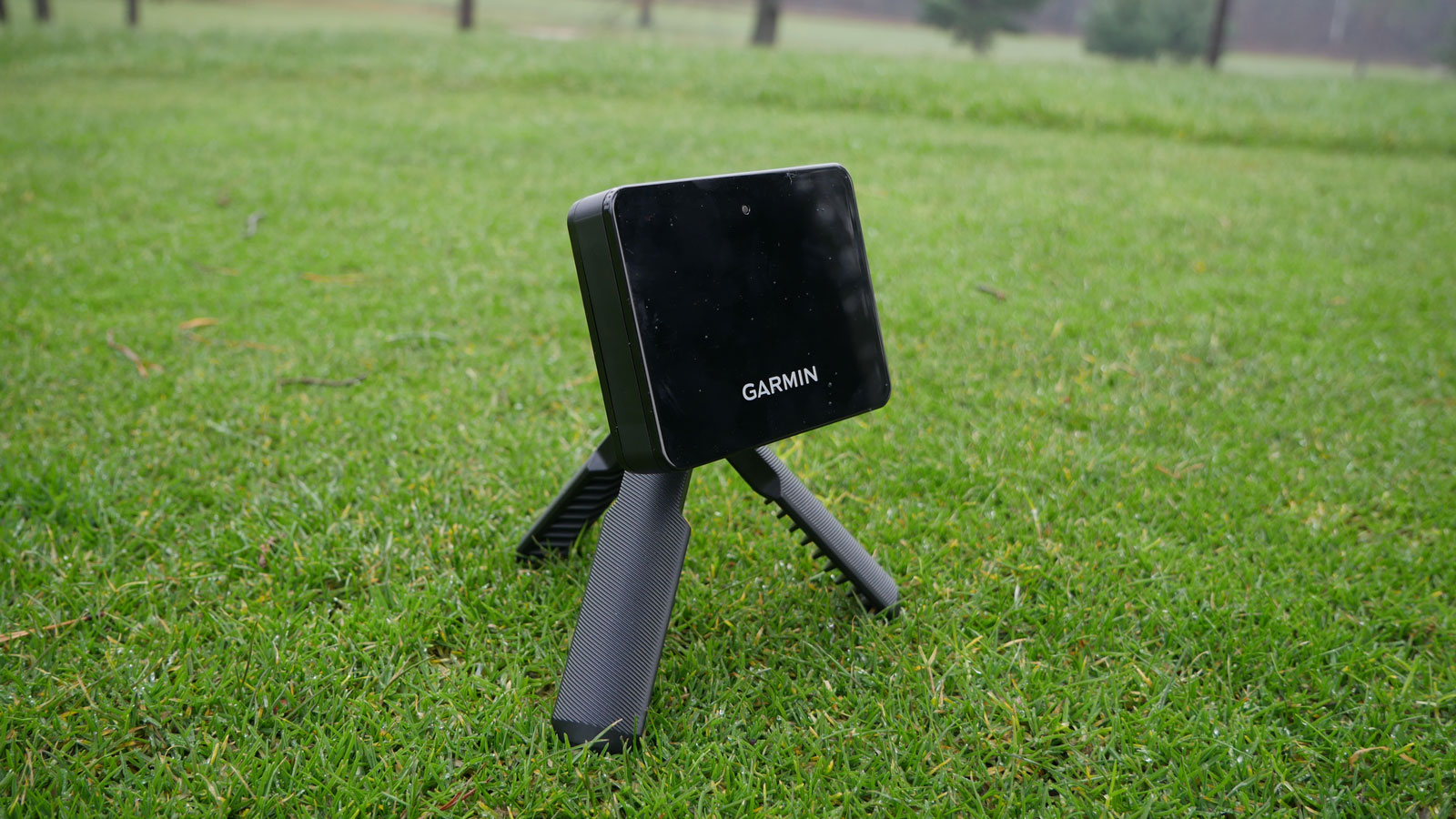
Specifications
Reasons to buy
Reasons to avoid
The Garmin Approach R10 packs a formidable punch at a low price. It's one of the most compact portable launch monitors out there and gathers an enormous amount of real time data which is then displayed on the accompanying Garmin Golf App - an app created by a trusted brand who make some of the best GPS devices in golf.
The R10 provides players feedback on both club and ball speed, smash factor, spin, club path and club face angle which will helps golfers learn more about the strengths and weaknesses of their golf swing and how far they hit the ball with each club.
Players can also use the Driving Range Mode, which automatically records video clips, to further analyze their golf swing. The Home Hero Golf feature also allows golfers to play over 42,000 golf courses worldwide on simulation which is a fantastic added bonus to an already solid launch monitor.
- Read our full Garmin Approach R10 Launch Monitor Review
Best photometric
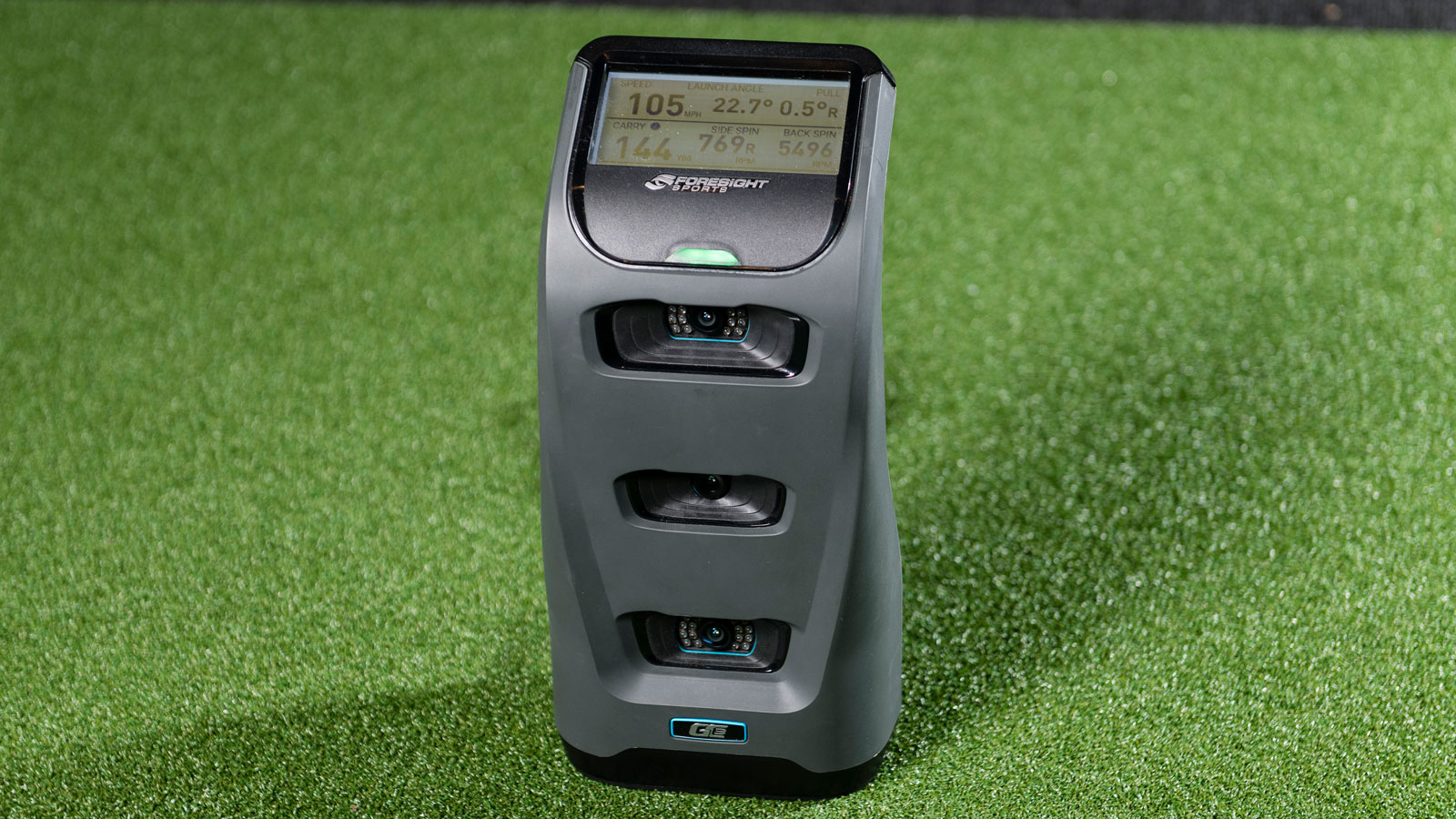
Specifications
Reasons to buy
Reasons to avoid
Built on the same advanced photometric technology found in the company’s flagship launch monitor, the GCQuad, the GC3 features a three-camera system that measures ball and club performance data, both outdoors and indoors, with precision and accuracy. It's arguably the closest thing you can get to tour-level data analysis of your golf swing.
What makes the GC3 so accurate is the Barometric Sensor which factors in temperature, humidity and altitude to give you data as accurately as possible.
It's portable and small, measuring just over 30cm and weighing just over 2kg, but may not fit into your golf bag as well as other units in this buying guide. It shares a lot of features with it's bigger, more expensive brother - the GCQuad, including the ease of use and speed of measurement and feedback. It doesn't measure face angle, loft and lie, impact location or closure rate like the GCQuad, nor does it provide full putting data, but you can access basic data for the latter by applying a simple sticker to your putter face.
Factor in the indoor and simulator experiences and the GC3 is an appealing prospect for the serious golfer.
- Read our full Foresight Sports GC3 Launch Monitor Review
How we test
At Golf Monthly we pride ourselves in our abilities to review a range of different golf equipment, from clubs and tech to shoes and golf bags. We do this thanks to our trusted review formula that has fine tuned and built after over a decade of reviewing some of golf's best buys. One of our methods is testing equipment in a range of different settings, for example using a monitor inside/outside, or in different types of weather. Of course many of the portable launch monitors also get used a lot because we do so much club testing as well.
Our reviews are done by golfers, for golfers, meaning our readers can then make the best informed buying decisions in a sport that we know isn't the cheapest hobby! This is why we put so much time and effort into our reviews because we feel like we owe it to you, the reader. No brand can 'buy' a good review, nor does one manufacturer get preferential treatment over another - we simply call it how we see it.
Why you'd want to buy a launch monitor
Golf is both a game of numbers and fine margins. The difference between a good and bad score if a fine line and thus we must try and give ourselves as much advantage as we possibly can - one way we can do this is through thorough, data based practice sessions on the range to help us learn as much as we can about our own golf game.
Launch monitors can help players lock in specific numbers - yardages, spin rate, carry distance and more. These numbers are now available through portable launch monitors that can help golfers make decisions on the right club to choose for a specific shot or what swing changes to make to tweak their game with the goal of improving their efficiency.
These numbers can often give you the answer to your why - why am I missing left? Why do I miss right with my driver? Why is my full wedge shots not spinning as much as I'd like?
Launch monitors can also dispel false tendencies you think you have in your game. For example, you might think you tend to miss right with your irons, only for the data to tell you your side spin numbers aren't as much as you'd think, meaning it's likely an alignment issue rather than a swing problem.
The more you learn about your game through a launch monitor, the more you can tweak your bag setup to accommodate your playing characteristics. The best golf gadgets are those who help us learn more about the game of the golf - the golf swing, it's mechanics and how your swing plays out. This helps us make informed decisions on which drivers, iron set or wedge you think would be best suited to compliment your swing. If the data tell you that you struggle with a slice off the tee then it would be wise to try out one of the many drivers for slicers on the market, for example.
There is a reason launch monitors are such a popular site across the professional game, from teaching centers to PGA Tour driving ranges. Both tour pros and teaching pros rely on the data they provide to teach their students or fine tune their own games for the best results possible. Now given the affordability of such devices, the regular amateur player can do this too. Add to the price how convenient devices today are and you're onto a winner, with many of the best portable launch monitors folding up nicely to be stored in our golf bag.
Some of the premium models that you'll see on tour or in high-tech fitting studios can be hugely expensive, so our rundown of the best portable launch monitors focuses mostly on the more affordable options, although we've covered some of the most portable premium options too. Be sure to take a look at our guides on the best golf simulator, best golf rangefinders or the best golf shot tracking apps and devices if the latest technology is of interest.
How to choose a launch monitor
When discussing the best golf launch monitors there are a number of factors to consider. Let's take a look at them.
Accuracy
The most important thing to focus on when buying a launch monitor is accuracy - you'll actually do more harm than good if you buy one that is giving out incorrect data. As mentioned earlier, we're happy to report that the quality and accuracy of data from cheaper models is really impressive. In fact, the overall floor of quality of the more budget-friendly options is pleasantly high, albeit there may be one or two wonky numbers thrown in there that should be easily identifiable.
Metrics
What do you want to learn about your game? Is your swing on the right path? How far do you hit each of your clubs? What's your ball speed? Clubhead speed? Smash factor? Spin rate?
I could go on and on here, but different players will want to focus on different things and not all launch monitors will have the exact data that some players will require. The more you spend, of course, the more likely your launch monitor will have all the data you need but if you're on a smaller budget then this should come into your thinking when deciding which one to buy. If money isn't a factor and you want as much information as possible then the Foresight Sports GCQuad and Trackman are the way to go. They are more expensive but offer incredible detail.
Features
Different launch monitors come with different features. Some can include swing videos and shot tracers while more expensive models can include full simulator modes that you can play games against yourself, the computer or even other friends on. Of course, with a launch monitor the most important function is measuring your swing and shot data, but often golfers will want a few more bells and whistles to play with - especially if they're splashing the cash for the high tech device.
Camera/Radar
There are usually two main technologies in launch monitors these days. Camera-based monitors use high-definition cameras to capture data at, and following, impact. Because of this they tend to be better for indoor use as some models may struggle in changing light conditions.
Radar designs use Doppler radar to follow the flight of the golf ball. These waves bounce off the golf ball to track the flight and this therefore makes them better for outdoor use.
Ease of use
Some people don't want the hassle of setting up an advanced launch monitor - they simply want to hit shots and look at the numbers. This makes the smaller devices like the Swing Caddie SC300 and Rapsodo particularly appealing.
Indoor/Outdoor Use
Are you going to be using the monitor inside or outside? If you look to focus on the former then investing in a proper setup may be the way to go whilst if you want to use a monitor outside then something convenient and portable is a better call.
Portability
Speaking of which portability is an important factor in itself. You don't want to have to be lugging something heavy around or something that takes too long to fold away.
Price
We have to mention price when discussing launch monitors. There will be some who can afford the top-of-the-range designs but many more won't. However as we have shown above there are still some very good more affordable models too.
Understanding
Not only does the launch monitor have to be clear in displaying data, but you the player needs to have some understanding of what those numbers mean.
FAQs
What launch monitors do pros use?
Professionals out on Tour use a variety of launch monitors right now. We regularly see players carrying around models from Trackman and Foresight Sports, whilst we also know some professionals use launch monitors at home, like the Full Swing Kit Launch Monitor used by Tiger Woods.
Are portable launch monitors worth it?
We think a portable launch monitor is worth it because of the benefits available like a great understanding of your golf game, more efficient practice, convenience, and importantly, there are really good models out there that do not have to cost thousands of dollars.
Can I use my phone as a launch monitor in golf?
Put simply, yes. With specific apps you can get launch monitor data to your phone with many of the top models syncing to your phone seamlessly. This gives clear visual and data feedback quickly and efficiently. Additionally some models actually utilize the phone itself as part of the data gathering process. For example the Rapsodo Mobile Launch Monitor requires your phone to sit in the cradle itself, and then when hitting shots it displays the data on the phone screen for you.
In short launch monitor manufacturers are recognizing the simplicity of using our phones and as such they are building in that functionality to make our practice simpler and easier.
If you want more buying advice, why not take a look at our guides on the best golf net, or best golf mat as well.
Get the Golf Monthly Newsletter
Subscribe to the Golf Monthly newsletter to stay up to date with all the latest tour news, equipment news, reviews, head-to-heads and buyer’s guides from our team of experienced experts.

Joe has worked in the golf industry for nearly 20 years in a variety of roles. After a successful amateur career being involved in England squads at every age group, Joe completed his PGA degree qualification in 2014 as one of the top ten graduates in his training year and subsequently went on to become Head PGA Professional at Ryder Cup venue The Celtic Manor Resort. Equipment has always been a huge passion of Joe’s, and during his time at Celtic Manor, he headed up the National Fitting Centres for both Titleist and Taylormade. He’s excited to bring his knowledge of hardware to Golf Monthly in the form of equipment reviews and buying advice.
Joe lives in North Devon and still plays sporadically on the PGA West region circuit. His best round in recent years came earlier in 2023 where he managed a 9 under par 63 at Trevose GC in a Devon & Cornwall PGA Tournament.
Joe's current What's In The Bag?
Driver: Switch between TaylorMade Qi35 and Callaway Elyte TD - both with Fujikura Ventus Black 6-X
Fairway wood 1: TaylorMade BRNR Copper Mini Driver - Fujikura Ventus Black 7-X
Fairway wood 2: Callaway Apex UW 17˚- Fujikura Ventus Black 9-X
Irons: TaylorMade P7CB 3-PW with Dynamic Gold Tour Issue X100 shafts
Wedges: Callaway Opus 50, 54, and 60 degrees - Project X LS 6.0 shafts
Putter: LAB Golf Oz.1 (zero shaft lean)
Ball: TaylorMade 2024 TP5x
Grips: Golf Pride Tour Velvet 60R
Bag: Vessel Player IV Pro DXR Stand
- Joel TadmanDeputy Editor
- Conor KeenanEcommerce Writer
-
 Could This 'Stumbled Upon' Equipment Switch Finally Land Rory McIlroy the Grand Slam?
Could This 'Stumbled Upon' Equipment Switch Finally Land Rory McIlroy the Grand Slam?Rory McIlroy made a golf ball change earlier this season that has reignited his wedge play and it could be about to pay off in the most dramatic possible way…
By Joe Ferguson Published
-
 The Masters Final Round: TV Coverage, Live Streams, Start Times As Rory McIlroy Battles Bryson DeChambeau And History
The Masters Final Round: TV Coverage, Live Streams, Start Times As Rory McIlroy Battles Bryson DeChambeau And HistoryAll the info on live streams, TV broadcasts, and free coverage of one of the most hotly anticipated final days of any Major as McIlroy battles with DeChambeau
By Patrick Fletcher Published